Maddening months at work, trying to migrate a very large Web site to a different technology, and no end in sight. It's time to take a break and, as luck would have it, Kristin's coming for a visit. We'll go to France for a while.
You
may not find this terribly rewarding unless you're included here, so this is a
good time for casual and random browsers to turn back before they get too caught
up in the sweep and majesty of the proceedings and can't let go.
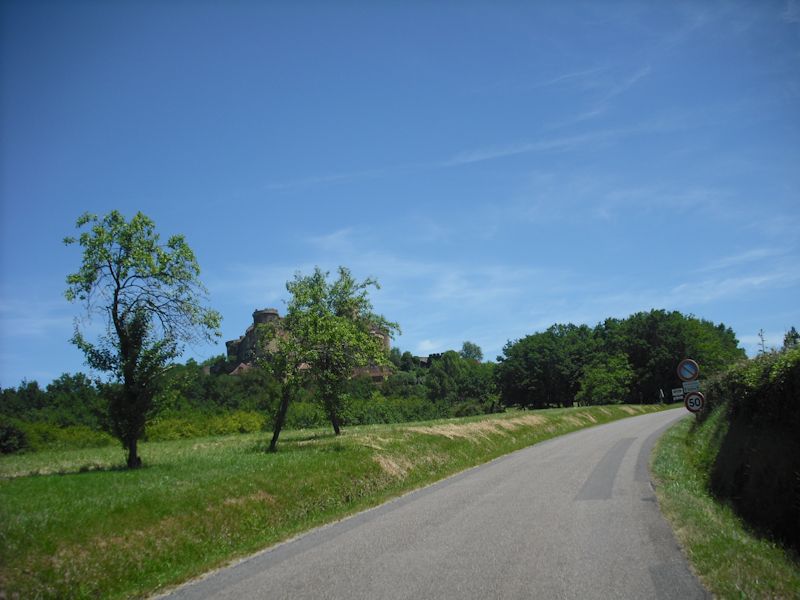
Castelnau -- the 'Château de Castelnau-Bretenoux' to distinguish it from some 25 other Châteaux de Castelnau, or "new castles", roundabout -- is hard to miss if you're motoring through the countryside here. It's perched up on a 200+ meters hilltop over the confluence of the Dordogne and St Céré's own little Bave, which we've been listening to tumbling and burbling all night (the river, I mean) from our room in the Victor Hugo, down past the carpark.
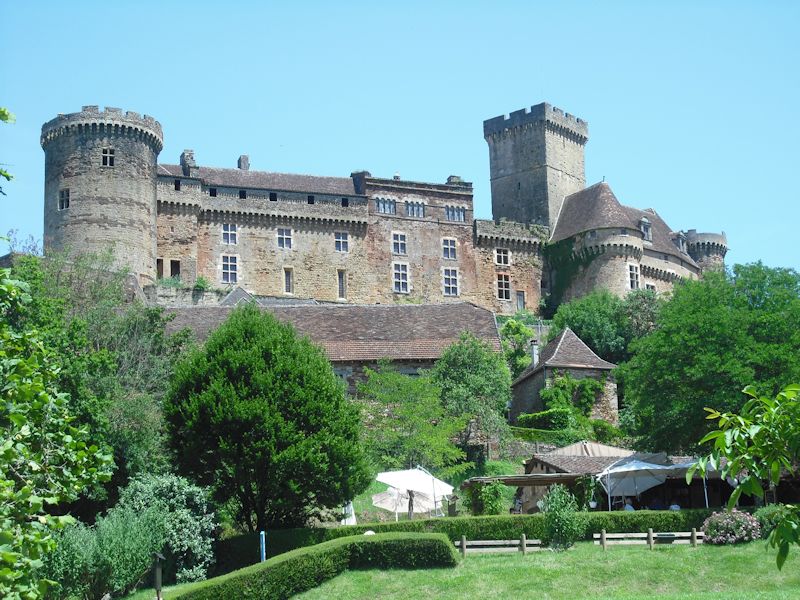
It's a fortification obviously all over the place, piled up incrementally by well-meaning folks over the centuries. Begun in about 1100 by the baron Hugues (pron. Oooooges) de Castelnau, the New Castle was constructed on the hilltop not far from the 'castel-vieil', or old wreck, and then had massive bits laid on as history plodded closer and closer to the age of modern artillery. (In the old docs, Hugues is called "Hugo castrinovi", and perhaps Hugo de Castellonovo, though that was probably a contemporary churchman from Bretenoux down the road.) Hugues then took off for the Crusades and left his worthy wife Alpasie in charge of the renovations.
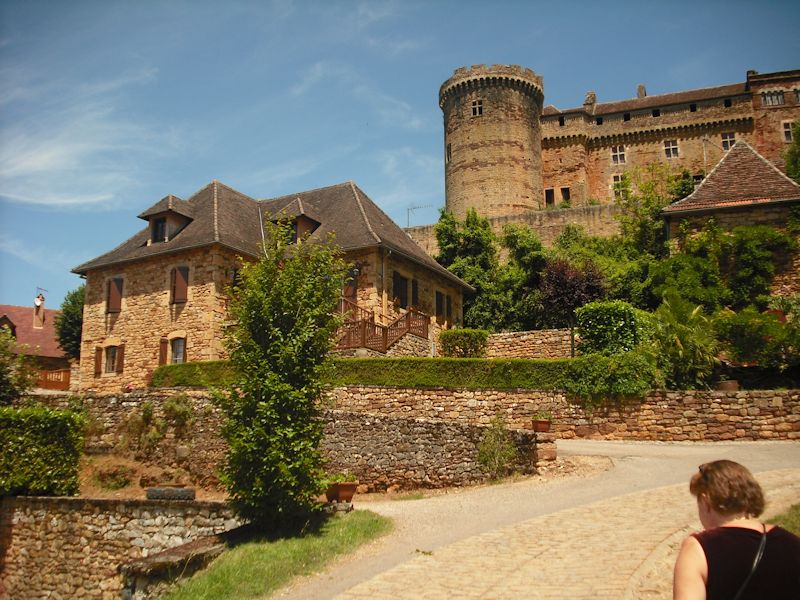
The powerful Castelnau dynasty baroned it over the region for centuries, probably full of arrogance and an insufferable sense of entitlement, but perhaps with a few poets, gentle maidens, and bashful troubadours along the way -- but always in conflict with their powerful feudal overlords, the Counts of Toulouse and the nearby Viscounts of Turenne, to whom they had to pay an annual tribute of one egg.
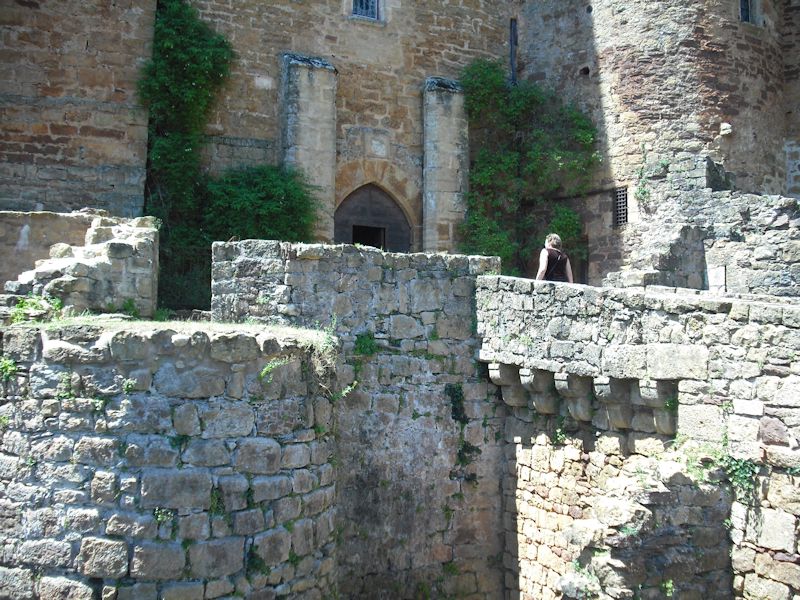
This would be a front door that even the US 10th Mountain Division couldn't kick down, throwing stun grenades and shouting "On The Floor" in English. Presumably they'd just skip the moat and call in the A-10 Thunderbolts. Kristin's getting in pretty easily, just by being nice, and paying 5 or 6 euros for the guided tour.
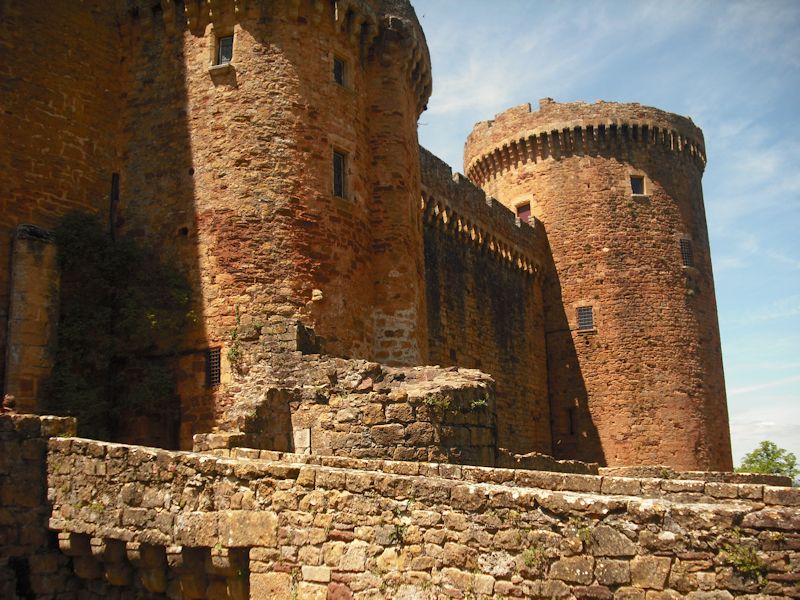
The monumental walls and tower are either silvery-white or red, as above, depending upon whether my Fujipix is forcing its flash or not. But this castle, whilst no Collonges-la-Rouge, is widely described as very red.
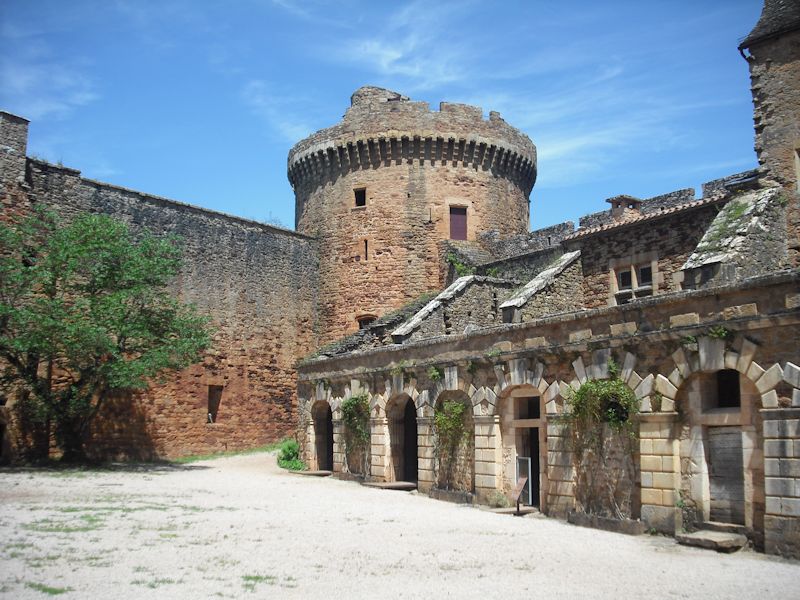
The inner courtyard, with a barracksy kind of look. The arcades presently house Roman artifacts from the region.

The more residential wing. We're wandering about at the moment, awaiting the end of the preceding guided tour and the advent of our own knowledgeable guide.
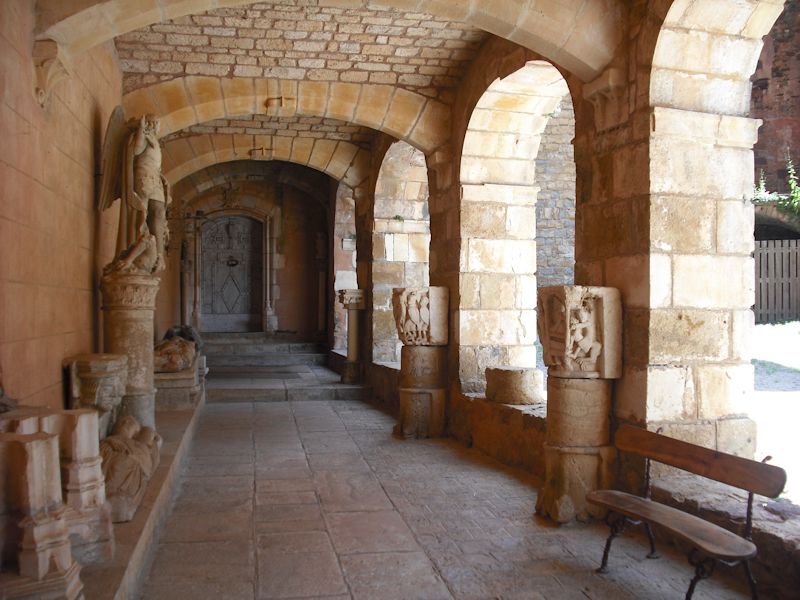
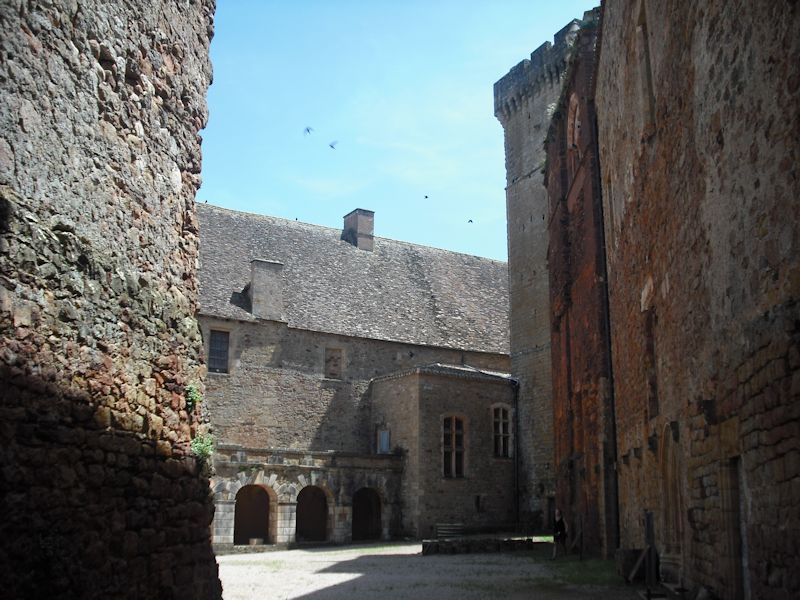
Brits may wish to exult at the thought that Henry II, the King of England, captured Castelnau in 1159, thus scoring significant points for the Union Jack. But since Henry was born in Le Mans, was Count of Anjou and Maine, was married to Eleanor of Aquitaine, grew up in France and spent much of his time there later, and died there -- and so did his son and successor Richard the Lionhearted -- the English may once again be exulting prematurely. But on the other hand, they've got Peter O'Toole, who made a brilliant career out of Henry II movies. Oh no they don't, he's Irish, isn't he.
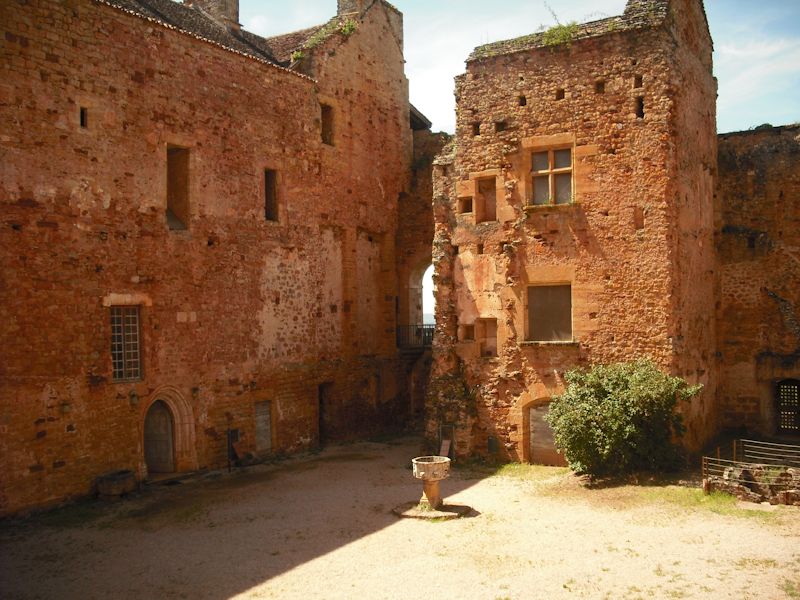
The kitchens and, through that window, a later promenade-balcony along the outer wall. Where is that tour guide?

Nice interiors
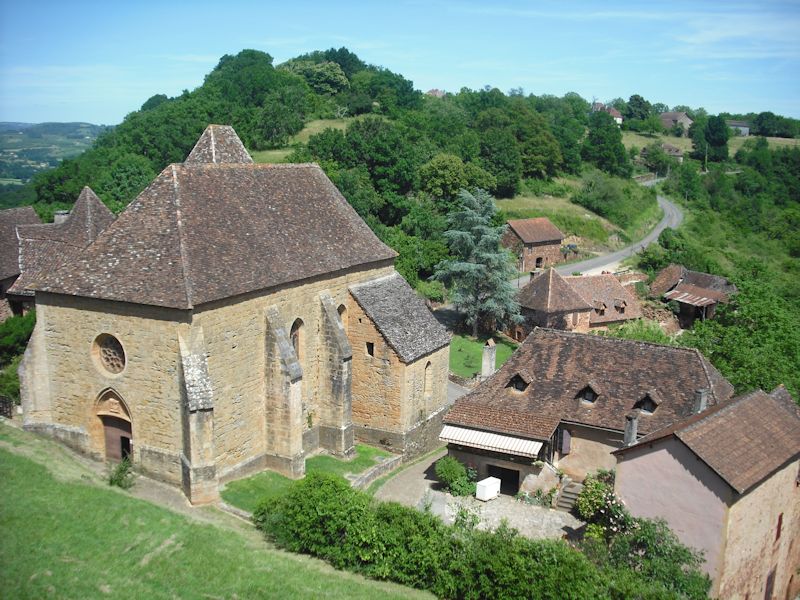
The chapel outside the walls
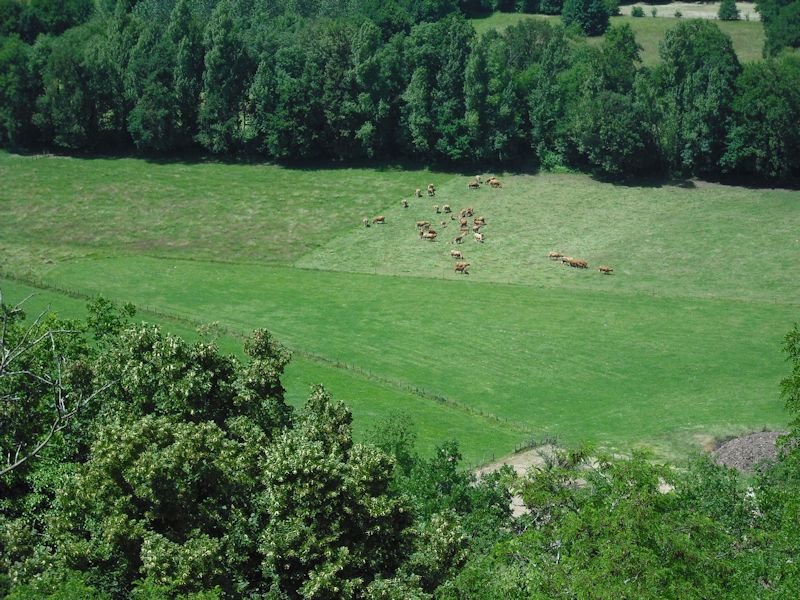
The cows outside the walls
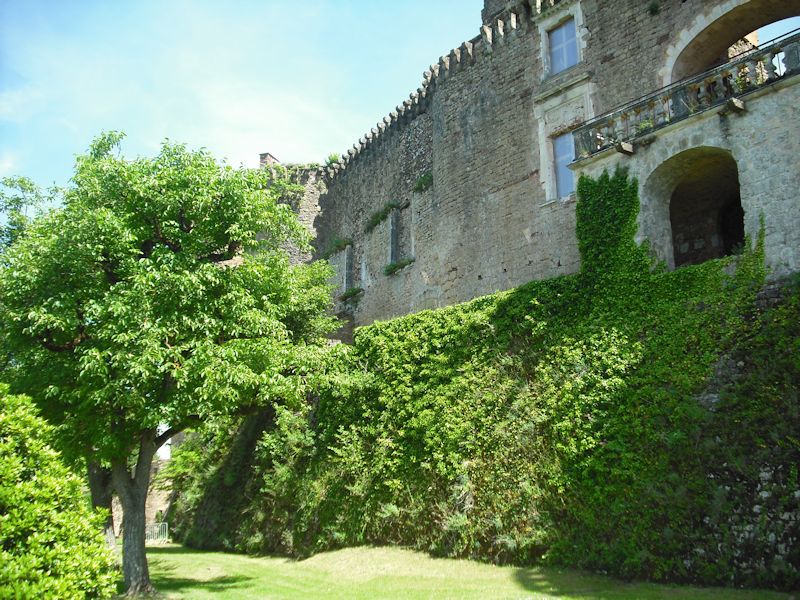
That's the promenade/balcony add-on just above on the right
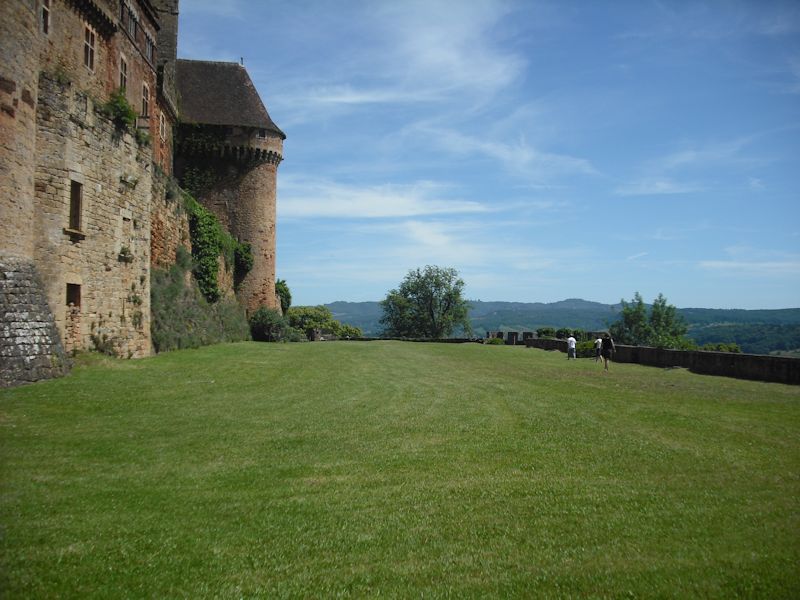
We've had the tour now, and that's Kristin dashing off on the grounds in pursuit of those poor hapless tourists. Our guided party consisted of us, an American couple in cycling gear, and two extended families, none of whom spoke French very well. Ascertaining which, our guide redoubled the speed of his anecdotes through the seven rooms that can be seen and carried on in a very enthusiastic and slightly hysterical manner, and laughed politely at all his own jokes, mostly alone.
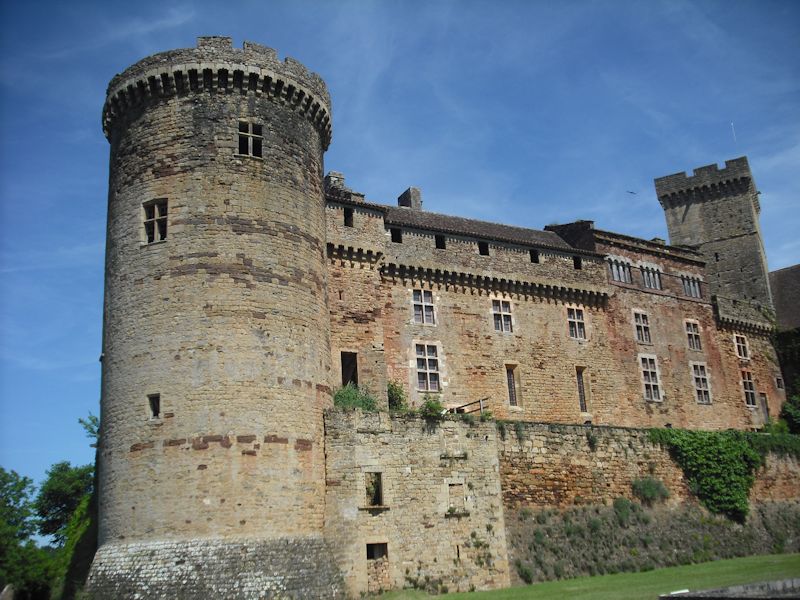
We're 'fairing la tour' round the grounds, above the outermost walls and along the gorgeous gardens and greens, which might well have been stables, compost heaps, sewage dumps, and vegetable gardens back in the day.

The neighborhood

The keep or donjon, which we could only peer up into, as the insides are mainly collapsed out of it now.
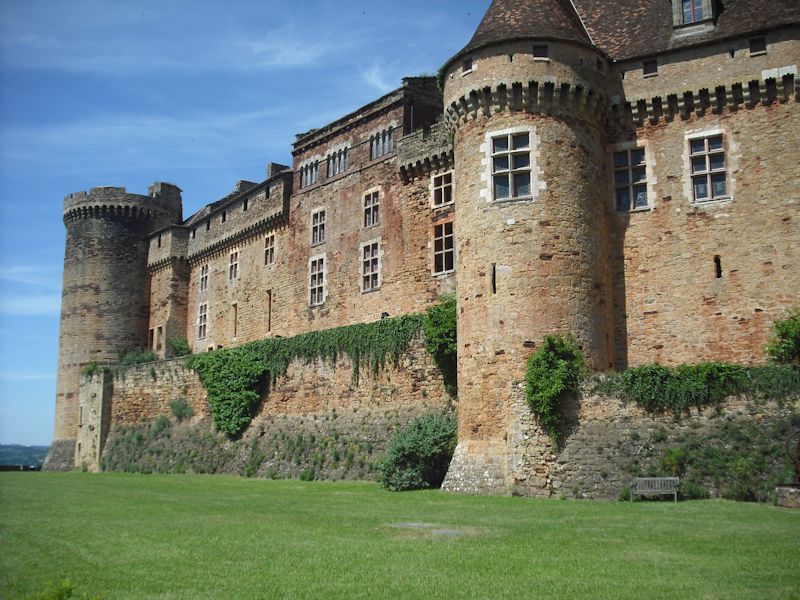
Superb lawns and imposing walls, and a bench. Let's have a little sit-down just for a few moments.
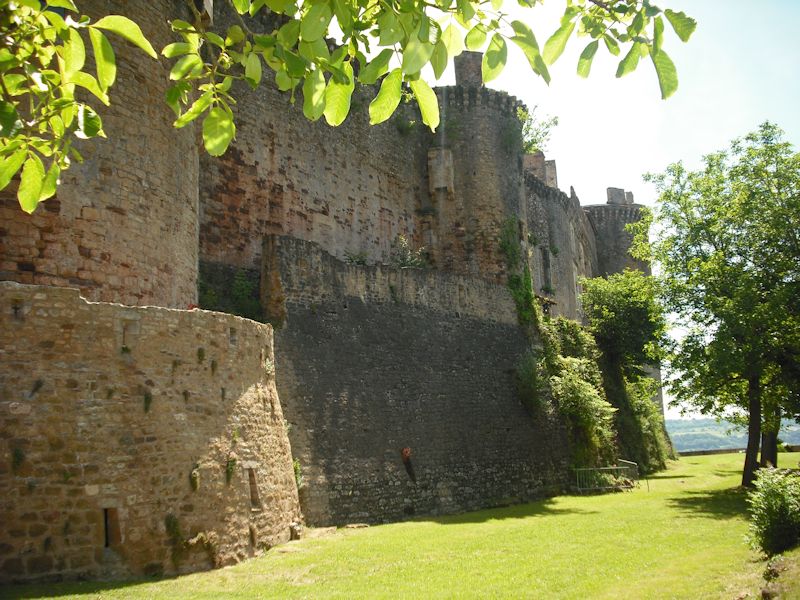
More walls. More very nice, labor-intensive lawns.

A last view of the keep, etc., and we're out of here.

Just to tie up the loose threads, the Castelnau family got the place back at the end of the Hundred Years' War, in the 15th century, but the line died out in 1759. The whole pile fell into disrepair until in 1895 it was bought up by a tenor from the Paris Comic Opera, Jean Mouliérat, who restored and refurnished it all lovingly and left it to the state when he died in 1932. So here we are.
One last important point, or issue: the town of Bretenoux below, which grew up not far from the castle, is one of the bastides, begun in 1277, and is now the Jam Capital of the World. And little Prudhomat-Castelnau at the foot of the castle hill is distinguished amongst villages by being so misleadingly marked that we wandered over these single-lane ridges a dozen times before we got to the front gates of the castle. But that's a mere cavillation.
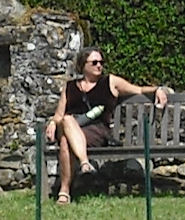 Dwight Peck's personal website
Dwight Peck's personal website























